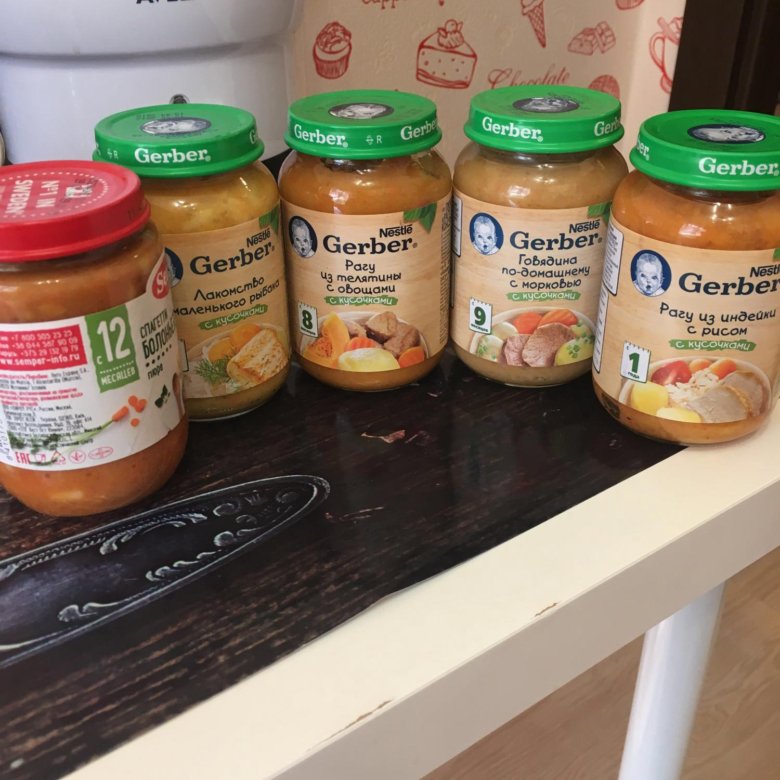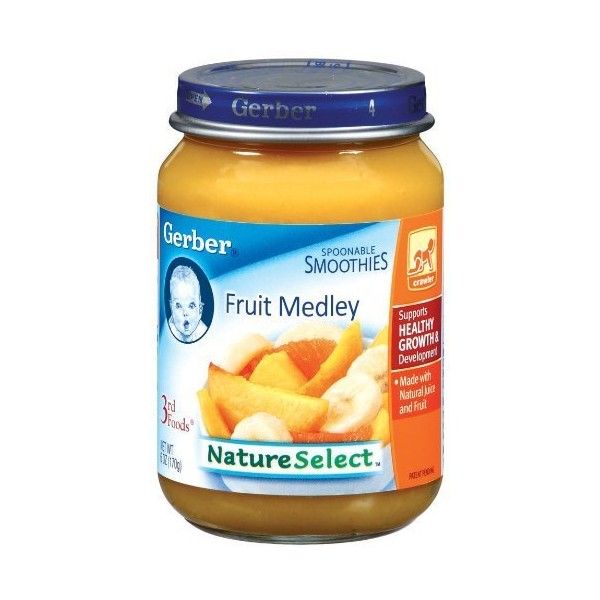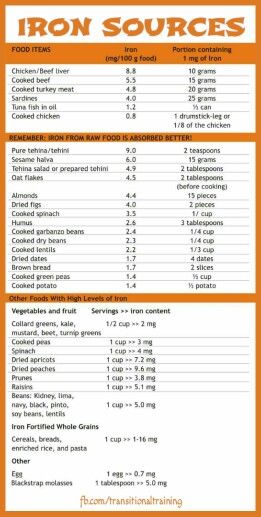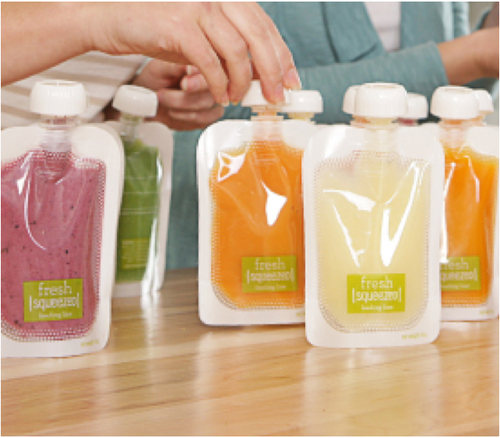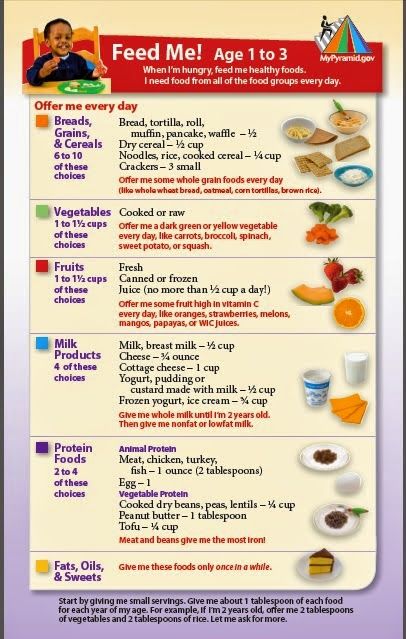Feeding baby chicks treats
Treats for Baby Chicks Can Be Fun and Nutritious
Reading Time: 4 minutes
Your initial focus when getting baby chickens was probably the basics: selecting a breed, setting up a chick brooder, and what you can feed chickens. When you were researching this last part, did you consider treats for baby chicks? Treats can add nutrition to your baby chicks’ diet. Plus they can be fun for your birds and for you!
Moderation
When thinking about treats for your baby chicks, keep in mind how small they are. Most of their diet should be supplied by a good quality chick starter. Treats should make up no more than 10 percent of their total intake. This is a good rule of thumb for all birds in your flock, no matter their age.
Grit
Chicks who are only eating feed do not necessarily need additional grit. If you are feeding chickens scraps or other treats, they will require this supplement. What is grit, exactly? Grit consists of small stones which the chicken eats and holds temporarily in its gizzard. This muscular organ acts like teeth for the chicken. Food is ground up by the action of the gizzard, with the help of the grit, so that the chicken can digest it. Grit comes in different sizes. For chicks, you should look for “starter grit,” which will be more finely ground. Adult birds who are able to free range pick up grit naturally in the environment but babies, who will most likely be confined, need you to supply it. This is an essential addition if you are feeding treats for baby chicks! Grit can be mixed in with food or offered separately. We have had success both ways; the birds seem to instinctively understand it is something they need and eat it as needed.
Treats for Baby Chicks
So what exactly can you feed those cute babies? Treats for baby chicks really look fairly similar to treats for adult chickens. They can eat a wide variety of foods if prepared properly. Again, think of their small body size. Cut up any food offered into appropriately sized pieces.
Eggs
Hard boiled eggs are a classic treat for baby chicks. Eggs are something chicken keepers often have on hand (in abundance!) and they provide a lot of protein for growing babies. Though hard boiled eggs are fairly easy for chicks to pick apart, you may want to mash it up before serving.
Eggs are something chicken keepers often have on hand (in abundance!) and they provide a lot of protein for growing babies. Though hard boiled eggs are fairly easy for chicks to pick apart, you may want to mash it up before serving.
Yogurt or Cottage Cheese
Like eggs, yogurt and cottage cheese provide good protein as a treat for baby chicks. Yogurt also supports good gut health with all its probiotics. Cottage cheese is a favorite of our birds, young and old. They do make a mess but have so much fun diving in for the curds!
Adults and babies alike love cottage cheese!Worms, Insects and Crickets
You can provide your baby chicks worms in several forms. Meal worms are easily purchased from the store and will be devoured by your young ones. Though it takes more work, you can also collect worms or other small insects from your yard for your babies. This can be a fun way to involve children in the care of your flock. My stepsons like to pick cabbage moth caterpillars off the plants in the garden in feed them to our birds.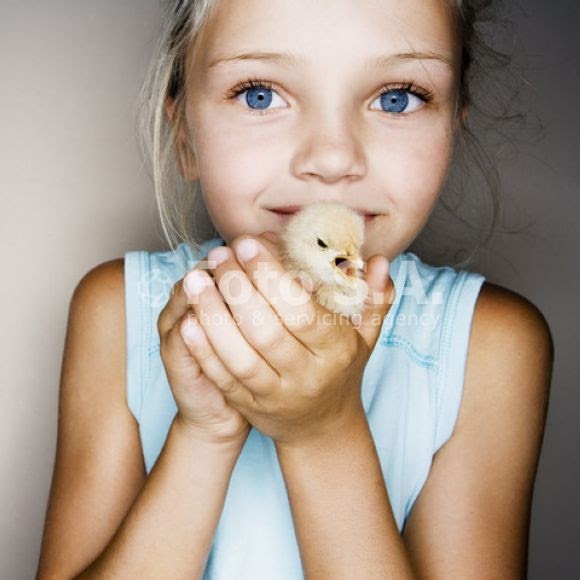 It’s pest control and treats for baby chickens all in one fun package. Crickets can also be caught or purchased and thrown into your chick brooder. Try this one and be sure to stay and watch the show. Chicks are bound to love the chase as much as the reward when they catch the poor insect!
It’s pest control and treats for baby chickens all in one fun package. Crickets can also be caught or purchased and thrown into your chick brooder. Try this one and be sure to stay and watch the show. Chicks are bound to love the chase as much as the reward when they catch the poor insect!
Fruit and Veggies
Chicks enjoy a wide range of fruits and vegetables. Some favorites among our birds are bananas, tomatoes, strawberries, watermelon, apples, grapes, lettuce, cucumbers, squash and kale. Again, keep in mind the size of your young birds. Softer items might be okay to throw in whole (watermelon or ripe stone fruit) and let the chicks pick off pieces, but tougher items should be cut up into appropriately sized pieces. When in doubt, cut it up.
These babies weren’t sure what to make of this peach when I first gave it to them.Since I grow kale and its season is so long, lasting all the way through the winter some years, this has been a staple treat for our flock. As a treat for baby chicks, I de-stem and chop it up. For the adults, I sometimes just throw a whole plant into the run and they tear it apart.
As a treat for baby chicks, I de-stem and chop it up. For the adults, I sometimes just throw a whole plant into the run and they tear it apart.
Greens from your yard can also serve as veggie treat for baby chicks. Dandelion greens, clover and grass clippings have all been favorites here. Be sure not to feed these to your flock if you use chemicals to treat your lawn.
Spaghetti
Small pieces of spaghetti are an entertaining treat for your little ones. They seem to view them as little worms, rushing in to grab a piece and running off with it dangling out of their mouths. Try this one if you want a good laugh.
Hopefully this list has given you some ideas of treats for baby chicks in your flock. The options are numerous. Just be sure to follow the rules of moderation and adding grit along with the treats, and have fun watching your birds devour their treats!
Gourmet treats for the baby chicks in your life!
- Home
- Brooder Care
- Treats
Homemade, healthy treats for the new chicks in your flock!
One of the most common questions I'm asked about newly hatched chicks is: "When can I start giving them treats?".
We all want our chicks to enjoy life, and there are some goodies which are both safe and healthy.
But it's important to remember that treats are not a balanced diet.
They are just that - a "treat" - something to be given in moderation, especially where chicks are concerned.
For more detail on what baby chickens should eat to remain healthy, see this page.
When is the right time?
A chick raised by a mother hen will start to eat "treats" like worms from the start, as she takes them outside. So, if we're raising our chicks as a mother hen would, some would say it's never too early.
But - and it's a big but - chicks are tiny. They don't have the capacity to process complex foodstuffs.
So they need good quality nutrition to see them through the critical time post-hatch. And they need to learn what their real food looks, tastes and smells like before they should be given anything different.
For that reason, avoid the temptation to give your newly hatched chicks any treats for at least the first couple of weeks after hatch.
What they need at that stage is a high quality, non-GMO, starter feed like this one.
If you purchase a product through links on the rest of this page, I receive a small commission at no extra cost to you. I only recommend products I have purchased or would purchase myself and which I believe would benefit you. To learn more please see my disclosure policy.
How much is too much?
Treats should make up no more than about 5% of your chicks' food - no more than a teaspoonful per chick every few days.
And if you do give treats - gourmet or not! - make sure the pieces are chick-sized. We'll look at what that means as we go through each one.
Why grit is so important.
It's critically important that, as soon as chicks eat anything apart from their starter feed, they have access to chick grit. They won't be able to digest food without it - and you'll have sick chicks on your hands.
With a mother hen, they'll pick up grit as they scratch around outside. For chicks in a brooder, we have to be like mother hen and provide the grit ourselves.
For chicks in a brooder, we have to be like mother hen and provide the grit ourselves.
This is not the same as oyster shell - chicks must not be given oyster shell. Keep it for your laying hens.
Offer chick grit in a bowl, separate to their food. The chicks will instinctively take what they need.
Lettuce - a great brooder-boredom-buster.
I know - not really "gourmet", is it?!
But it's my number 1 recommendation for chick treats in the brooder.
Why? Because not only is lettuce a healthy treat - it can keep your babies entertained for hours.
How? Watch this video to find out!
Eggs - excellent for building up weak or sick chicks.
I know it sounds weird to feed egg to chicks, but it's my second favourite treat for a reason.
Eggs are full of goodness - especially protein. After all, the chick has not long ago been nurtured by an egg throughout the whole of its incubation and for at least 24 hours post-hatch.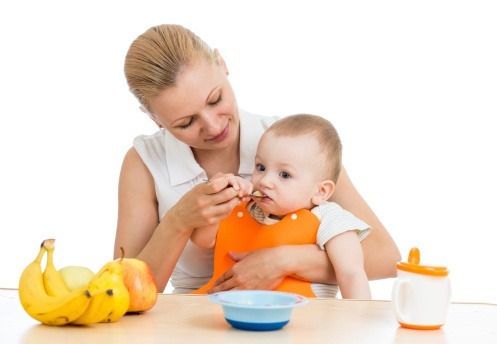
So if you have a chick who is weak, or smaller than the rest, or being bullied and needs some extra care, think about feeding it some cooked egg.
I give it as a treat to all my chicks maybe once a week as they grow. It's important, of course, not to feed raw egg - make sure it's cooked.
The last thing you want is chicks getting a taste for uncooked egg...
Either scramble or hard boil one egg for every four chicks and feed no more often than once a week. Scrambled is fine for babies to peck at. If it's hard-boiled, mash it into smaller pieces.
Sweetcorn - a readily available source of antioxidants.
Something a little more tasty now - sweetcorn. High in antioxidants(1), it's a great food for building up your chicks' immunity.
Again, it should only be given in moderation.
My chicks would kill for it, as you can see (notice the pot of chick grit - which one baby is sitting in!).
Sweetcorn - a favourite treat. Not supposed to sit on the grit though, chick!
Not supposed to sit on the grit though, chick!
Mine love canned sweetcorn, but it's important to check there is no added salt or sugar. If there is, either don't give it them or rinse it well before you do.
Defrosted frozen sweetcorn is a healthy alternative.
Corn still on the cob is too hard for very young chicks to peck off, so I avoid that until they're bigger.
If your chicks are three or four weeks old, they probably won't have a trouble with the large pieces. But it's a good idea to chop it into tiny bits anyway.
Sprouted seeds - an inexpensive, homemade chick treat.
Easy to make and a great source of nutritious greens in the winter when there's not much else about, sprouted seeds also make for an inexpensive chick treat at any time of year(2).
I use sprouted lentils, and when feeing them to chicks I don't allow them to grow too long. About this size is right for babies.
Sprouted lentils - a great source of nutrients for chicks.
For details about how to easily sprout seeds, take a look at this page.
For a cold weather recipe for lentils to help your chicks through the winter, this page about the benefits of lentils for poultry will help.
Sunflower seeds - grow your own for summer fun and chick health.
Grow them to add sunshine and fun to your summer garden. Chop the seeds up in the autumn to feed your growing chicks later in the year.
The seeds are ripe for picking when the flower head has lost its petals and is drooping, and the florets stand out above the seeds.
The seeds are ready when the flower head has lost its petals.
If you don't want to wait that long, you can of course buy the seeds online or at your local feed store.
Choose the black over the stripey ones - they have more nutrients(3). Whichever brand you buy, check that they're pesticide free.
And make sure for young chicks that you chop them into small pieces - the entire seed is much too big for a baby to tackle.
Again, feed in moderation - too much protein is not good for hatchlings. A teaspoon per four chicks, once a week, is more than enough.
For more detailed information about why sunflower seeds are so good for all your flock, and how to grow them, see this page.
Fruit and veg - but not five a day!
Chicks love fruit and veg, and they're generally healthy options for treats. If they're ripe and soft, it's fine to feed them whole and allow the chicks to peck, but anything hard needs to be chopped into small pieces.
In the case of veg, grating or spiralising them is a great way to feed.
You'll find out what your tinies prefer by trial and error. Some favourites I've found over the years are strawberries - probably the favourite - and grapes (cut up), ripe figs (I'm lucky enough to have a fig tree in my chicken run), apples and cucumbers - either grated or spiralised - and watermelon.
Nutritious and hydrating - the perfect gourmet chick treat!
Watermelon can be a real boon in more ways than one.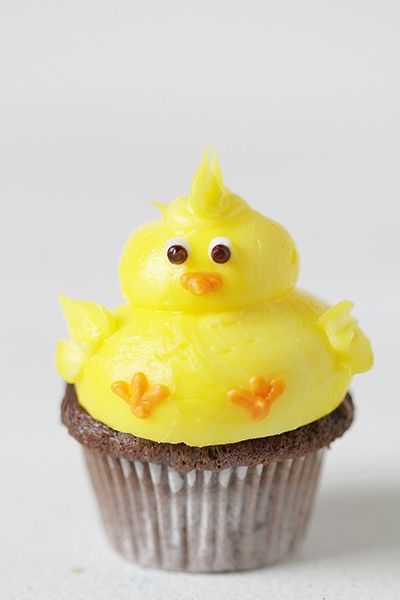 It's a very healthy treat - it has no fat, very high levels of Vitamin 'C' and it's crammed with antioxidants, which help prevent cell damage(4).
It's a very healthy treat - it has no fat, very high levels of Vitamin 'C' and it's crammed with antioxidants, which help prevent cell damage(4).
It is also is an excellent way of keeping your chicks hydrated, especially as they're growing quickly during the hot summer months.
Again, moderation. Fruits particularly have high levels of sugar - even if it is natural. So feed your chicks small amounts, no more than once or twice a week.
For information about which part of the fruit is good for your flock, plus two easy recipes to make sure your chickens benefit from it, see my detailed watermelon article.
Worms and bugs - the crawly favourites of all time!
A baby chick in the yard with its mother hen will be quickly introduced to all kinds of yummy treats. High on the list is worms and bugs - live, of course...
So if you're going to act like mama hen, you'll need to catch some yourself (or give it as a task for your children or grandchildren - they love it!).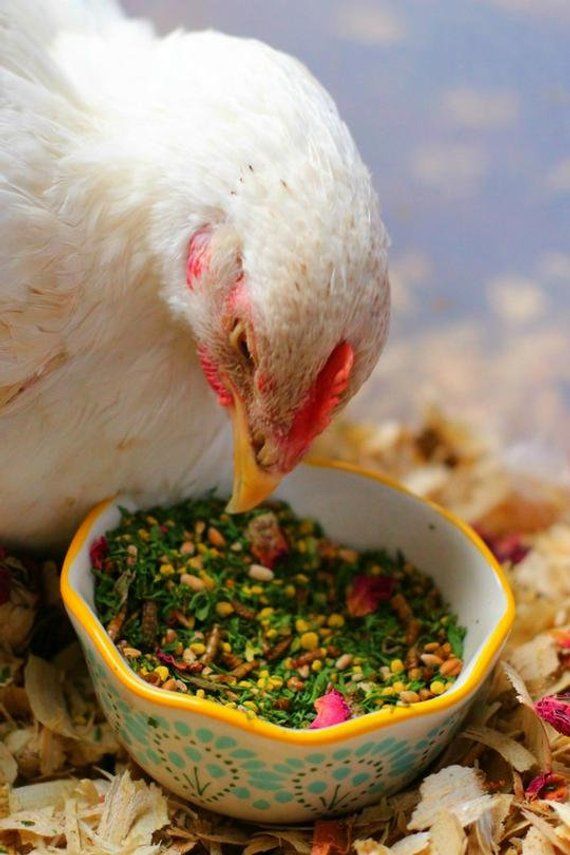 It's free, it's great pest control for your garden and it provides your chicks with treats, all at the same time.
It's free, it's great pest control for your garden and it provides your chicks with treats, all at the same time.
If you can't face the thought of catching (or buying) live bugs for your baby chicks, think about buying some dried.
Mealworms.
A live mealworm infestation can be a problem in large, commercial poultry facilities. Chickens prefer to eat them rather than their feed, and their diet and health then becomes unbalanced(5).
It's exactly the same for your own flock, and for your chicks.
Chickens of any age love mealworms. They're very high in protein, and they can be extremely useful at times of stress in their lives - moulting, for example, or following a predator attack.
And growing chicks do need protein. But they don't need to be overloaded with it.
So again - moderation. A teaspoon of mealworms once a week is plenty. I do chop them up for baby chicks, but once they're a month or so old, there's no need. They'll gobble them up whole.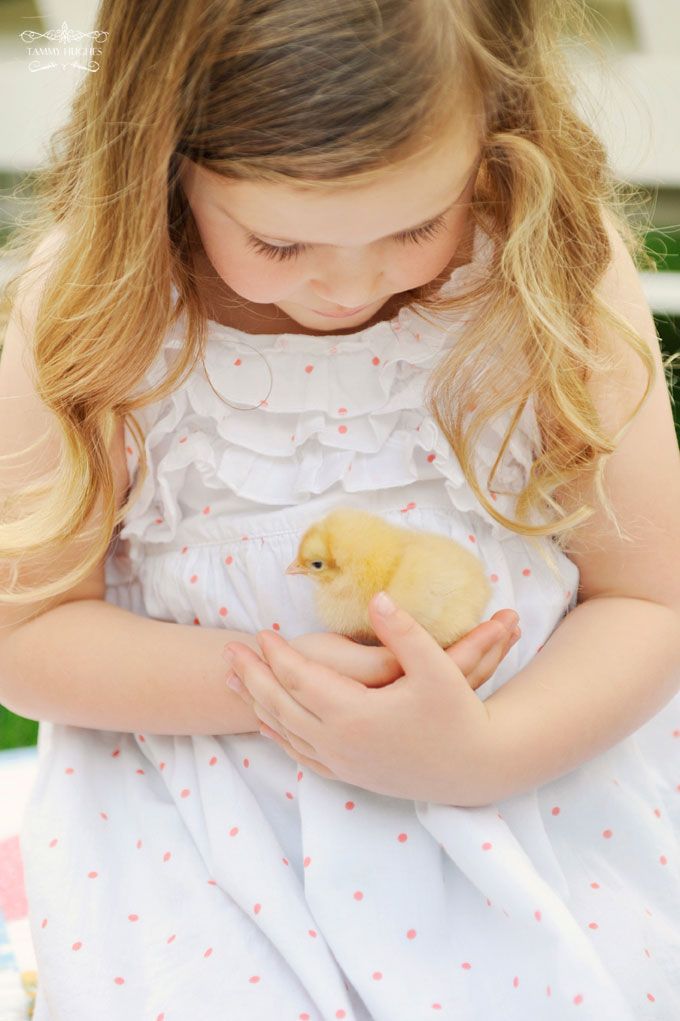
Crickets.
While crickets are currently being researched as an alternative source of protein for humans, they're less common as a treat source for chickens(6).
But there's actually nearly double the amount of protein in a cricket compared to the mealworm, and double the amount of fat.
Chickens of all ages love them, but with young chicks there's even more need to feed sparingly. Chicks do not need high amounts of fat.
Don't fancy catching some live crickets yourself? No problem - here's some done for you!
What
not to give chicks as treats.At the risk of repeating myself (many times!) I'm going to say it again: baby chicks should be given treats - even gourmet ones - in moderation.
Give one or two of the choices above no more than two or three times a week. Chicks need the balanced nutrients their feed gives them, and adding too many treats will seriously unbalance the mix.
There are other foods which are unhealthy, even dangerous, for baby chicks to eat. Long lawn clippings are first on my list, oyster shell is second, and all the foods on this page for exactly the same reasons they're harmful to adult chickens.
Long lawn clippings are first on my list, oyster shell is second, and all the foods on this page for exactly the same reasons they're harmful to adult chickens.
Be kind to your chicks - but make sure you don't kill them with kindness.
If you liked this article, you may find these helpful.
Sources.
A lot of "facts" you'll find on the internet are often people's individual views, often based on inaccurate information repeated from poor quality sources.
The information I provide in this article and others is based not just on my own experience, but on evidenced facts from scientific, peer-reviewed research and evidence from highly respected and experienced poultry keepers such as Gail Dammerow.
Some of the sources I have used are these - click the link to read the full document:
1. Dewanto et al: Processed Sweet Corn Has Higher Antioxidant Activity. Pub. Journal of Agricultural and Food Chemistry, 2002.
2. Chandler, B: The nutritional benefits of sprouted lentils.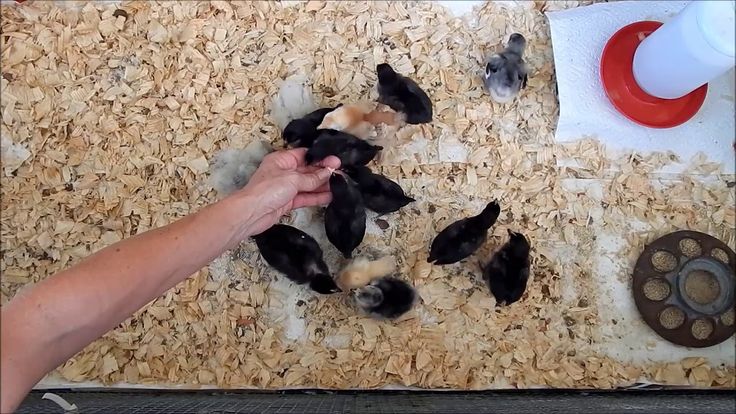 Pub Livestrong, 2016.
Pub Livestrong, 2016.
3. Jacob, Dr J: Using sunflower seed in organic poultry diets. Pub. University of Kentucky, 2014.
4. Ahmed, H: Nutritional value of watermelon seed meal for chicks. Pub Animal Production Food Research Centre, 2004.
5. Loftin, Professor K: Biology and Management of the Lesser Mealworm in Poultry Operations. Pub. University of Arkansas, Department of Agriculture, 2014.
6. Lundy, ME and Parrella, MP: Crickets Are Not a Free Lunch. Pub. Plos Pathogens, 2015.
- Home
- Brooder Care
- Treats
diet in the first days of life, chicken feed norms
The diet of chickens, especially small ones, is different from the diet of adult chickens. Many breeders who raise chickens in the household are interested in how and what to feed the chicks so that they develop properly. For healthy growth, chickens require a balanced diet in sufficient quantities. The composition of the products depends on the direction and age of the chicks. |
Content:
- What does healthy chicks eat?
- General rules for formulating rations
- What to feed chickens?
- General rules for feeding
- Feed for chickens of various ages
- Feeding frequency
- Feeding Features
- Farmer's Councils
What does a healthy chicken diet consist of?
Sources of proteins, vitamins, micro and macro elements are products of plant and animal origin, as well as substances synthesized in the laboratory. For the production of finished formulations in the factory, only high-quality proven raw materials are used. In feed for laying hens and broilers are introduced:
|
It is quite difficult to independently calculate the proportions and mix the components thoroughly without the appropriate equipment.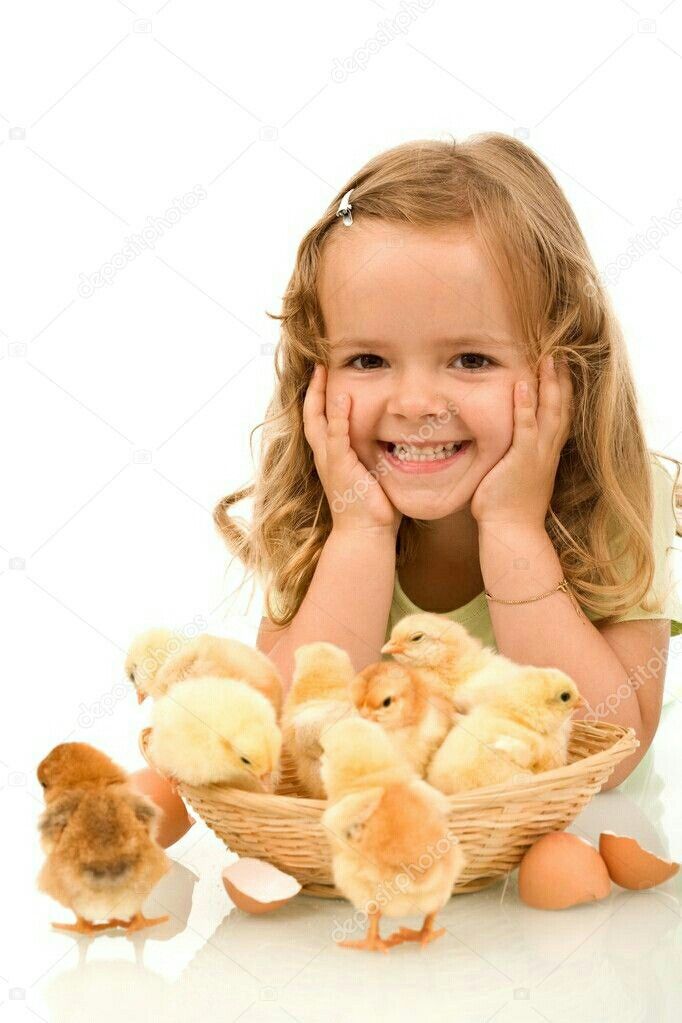
General dietary guidelines
The terms of growing meat breeds are 1.5-2 months, laying hens - up to six months. During this time, the bird should gain weight of 2.5-3 kg. To accelerate the growth of muscle mass in broilers, it is recommended to use specialized feed. It fully meets the needs of the bird in proteins, fats, carbohydrates, vitamins and minerals. The composition and consumption of feed should be appropriate for the age of the chicks.
At 1-2 weeks of life, the foundation of the skeleton is laid in chickens, muscle mass increases at an average pace. At this time, it is necessary to introduce a sufficient amount of proteins, fiber, and mineral components into their diet.
In the growth phase, chickens are gaining weight intensively. They need as many amino acids and proteins as possible, which act as a building material for cells, as well as complex carbohydrates. The dose of vitamins and minerals received with food is increased.
At the finishing stage, the amount of carbohydrates is reduced so that the broilers gain more muscle mass, and not fat.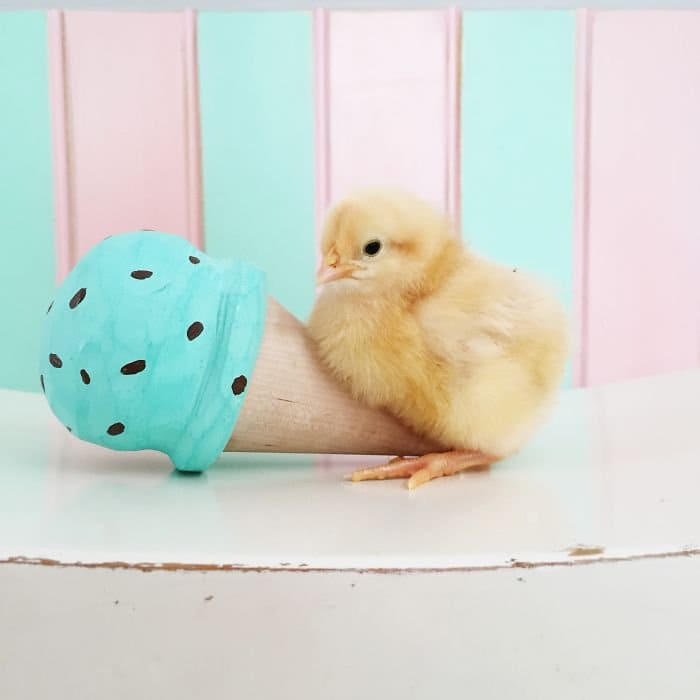 At this stage, it is important to prevent weight loss. For these purposes, finishing compound feed is introduced into the diet.
At this stage, it is important to prevent weight loss. For these purposes, finishing compound feed is introduced into the diet.
What to feed chickens?
Cereals form the basis of the diet.
| Corn | One of the most useful and nutritious ingredients. Corn is the leader among grains in terms of protein content, while it contains less fiber than other cereals. The product is easily digested and well absorbed. |
|---|---|
| oats | Source of many amino acids. It is considered a dietary product, but contains a lot of fiber. In large quantities, it causes blockage of the intestines, so its share in the composition of the feed does not exceed 20%. Oats are given in a purified form, completely removing the film from the grains. The size of the fraction depends on the age of the bird. Sifted oatmeal is usually added to prestarter formulations. |
| Wheat | Contains a large amount of vitamin E, B. Feed wheat is usually used in bird feed. The percentage can be up to 30%. Feed wheat is usually used in bird feed. The percentage can be up to 30%. |
| Rye | It is a source of a number of useful proteins, but contains too much mucus, which negatively affects the digestive system of chickens. It is added to some feeds in small quantities. |
| Barley | Practically not inferior to oats in useful properties, but also contains a lot of fiber. It is introduced into the composition only in a purified and sifted form. |
| Buckwheat | Despite the fact that the product contains components useful for poultry, it is rarely used. Basically, it is added to granulated feed, because. in loose form, chickens do not peck it. |
| Bran | Products of processing grain crops are introduced to increase the caloric content of the diet. By themselves, they have no nutritional value, so they are rarely used. |
Peeled vegetables are used as succulent feed.
| Potato | Improves poultry digestion, promotes the absorption of nutrients. It is introduced in boiled dehydrated form. In the process of preparing food, it is unacceptable to use green potatoes, since poisonous solanine has formed in them. |
|---|---|
| Beet | It normalizes the work of the intestines, prevents its blockage, provides the needs of chickens for vitamin B2, carotene, sugar. It can be given both fresh and boiled. The content of beets in the diet is about 15%. |
| Pumpkin | It contains a lot of vitamins and microelements. The product is added in an amount not exceeding 15% of the total volume. |
Protein components provide the daily requirement for amino acids. Protein sources are also rich in vitamins and minerals. They can be of plant and animal origin. Amino acids are well absorbed by the body. Animal proteins are obtained from various types of flour:
- fish.
 This product makes up to 8% of the diet, but is not used in broiler feed so that the meat does not have a specific smell;
This product makes up to 8% of the diet, but is not used in broiler feed so that the meat does not have a specific smell; - bone. In terms of the amount of proteins, it is not inferior to cereals, and at the same time it is rich in fats (11%) and vitamins A and E. It is given to chickens from a month old;
- blood. The product is rich in essential amino acids, but in high concentrations it provokes indigestion. Its share in the diet should not exceed 4%;
- pen. This component is used as an available source of protein to balance the feed composition. It is added in small amounts (up to 2%).
Dairy products are also a source of well-digestible animal protein: cottage cheese or whey. Their inclusion in feed mixtures for laying hens increases the egg production and fertility of chickens.
Legumes are richest in vegetable proteins:
- soy in terms of percentage and qualitative composition of proteins and amino acids is practically not inferior to products of animal origin, it also contains vitamins and minerals;
- peas also provide protein requirements for poultry, although to a lesser extent; chickens do not eat it well because of the specific smell and taste, therefore, no more than 10% is introduced into the feed;
- soybean and sunflower meal and cake are an inexpensive, highly digestible source of amino acids.
 In compositions for adult chickens, their share is 15-17%, for chickens and young animals - 10%.
In compositions for adult chickens, their share is 15-17%, for chickens and young animals - 10%.
General feeding rules
| Each individual should consume approximately 15-30 g of food per day: how much depends on the breed, weight of the chicks, and the intensity of their development. In general, the amount of feed each time should be such that the young hens will eat it in 30 or 40 minutes. The remains must be removed from the feeders so as not to deteriorate, and the feeders themselves must be washed and dried. |
If the chicks do not eat the feed given to them often, then its rate should be reduced. If, on the contrary, the food is eaten quickly, then it is desirable to increase its volume.
Feed for chickens of various ages
| PC-2 | Designed for chicks under 7 weeks old. It is produced in the form of finely ground grains, designed for an insufficiently unformed digestive system, easily digestible, contains all the useful trace elements. |
|---|---|
| PC-3 | Balanced mix for young animals 8-20 weeks old. Promotes rapid growth and proper formation of the reproductive system. It is produced in the form of grains with medium-sized fractions. |
| PC-5 | Designed for broiler chickens from 2 weeks to 1 month of age. It consists of a complex of easily digestible components that stimulate a set of muscle mass. |
| PC-6 | It has similar characteristics, but is designed for broilers older than a month. |
All types of feed can be divided into three groups:
| carbohydrate | Protein | Vitamin |
|---|---|---|
Promote accelerated growth and muscle mass gain. Their composition is dominated by cereals and vegetables. Chickens digest foods high in carbohydrates well, which cause a slowdown in metabolism and rapid weight gain. Such feeds are designed for broilers and increase the average carcass weight.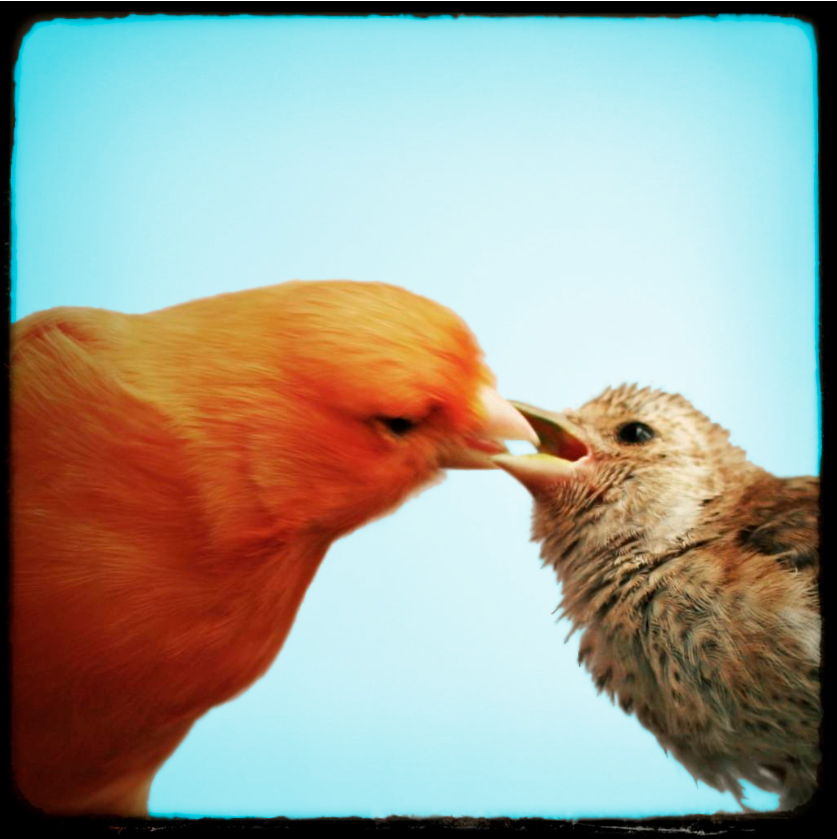 | Such compound feeds are developed mainly for laying hens. A large amount of protein increases the productivity of the bird, improves the palatability of the eggs, and makes the shell stronger. | Strengthen the immune system, help to survive the winter period. Usually produced in the form of concentrates, which enrich the main diet. |
According to the form of release, the compositions are of 2 types.
| Loose ones consist of fine-grained components. The disadvantage of such compositions is that they are worse absorbed. The chicken chooses tasty crumbs from the feed, and the less appetizing ingredients are thrown away. As a result, the bird receives less nutrients. In addition, a lot of dust remains in the feeder. However, it is impossible to completely abandon loose compositions. Chickens in the first weeks of life are not able to swallow and digest large granules, therefore they can peck only small grains. |
Expanded feed is produced by short-term heat treatment under high pressure. Nutrient mixtures are in the form of granules and contain liquid components in their composition. The advantages of expanded compositions include:
However, when heated, some of the vitamins are destroyed. |
Feeding frequency
The first time chickens are fed on the same day they are born. Then, until the age of 7 days, the chicks of meat breeds are fed 6-8 times a day, from the 2nd week of life - 6 times, from the 3rd - 4 times a day, by the age of one month, chickens are fed three times a day. Chicks of egg breeds up to 1.5 weeks are fed 5-6 times a day, and by the month they are gradually transferred to 3 meals a day.
Chicks of egg breeds up to 1.5 weeks are fed 5-6 times a day, and by the month they are gradually transferred to 3 meals a day.
When choosing a mixture, it is recommended to give preference to complete formulations. However, if the breeder has enough of his own food, you can limit yourself to concentrated additives to enrich it. Such compositions are marked with the QC marking. Concentrates for meat and egg-bearing breeds solve different problems:
| for broilers | for laying hens |
|---|---|
|
|
It is unacceptable to use concentrates as the main feed, since an excess of nutrients is no less harmful than their deficiency.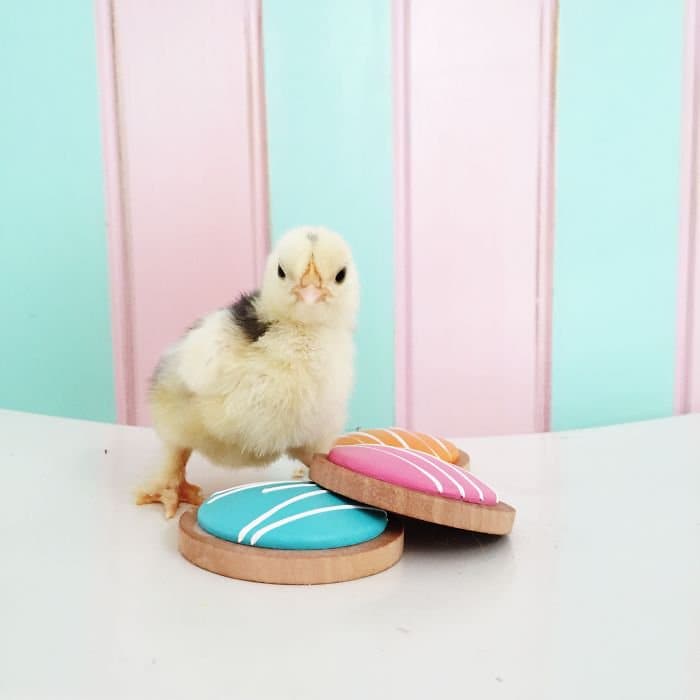 BVMB is introduced into the composition of the mash, taking into account the age of the chickens.
BVMB is introduced into the composition of the mash, taking into account the age of the chickens.
Feeding Features
| 1st day of life | Feeding of chickens of egg breeds begins immediately after they dry out. The first food for newborn chickens should be a hard-boiled egg. It is cut as small as possible so that the chicks can swallow small crumbs and roll it in semolina to prevent pieces from sticking to the paws and fluff. In the brooder where they are, they put a drinker with clean, boiled and cooled water. Newly hatched chicks are also fed boiled eggs under the brood hen. |
|---|---|
| 2nd day | On the 2nd day, the chicks are already given a mash of eggs and homemade low-fat fresh cottage cheese (the ratio of ingredients is 1 to 1). The formula for feeding day-old chicks should be fresh and fed every 3 hours. |
| Week 1 | From the 3rd day, chickens are fed with a more varied mixture of cottage cheese, boiled eggs, crumbly porridge from corn, oat or wheat chips (the share of cereals should be 65%). |
| 2-4 weeks | From 1.5 weeks of life, a little sunflower or soybean meal (3-4% of the total food volume), chalk or shells, bone meal (5-7% of the feed amount or 2-3 g per 1 chick). Particles of top dressing should not be more than 1-2 mm. Very fine gravel or sand washed in water is placed in a separate container. After 10 days, eggs are removed from the diet, but other components are introduced, for example, root crops (boiled potatoes, etc.). Salt, rice, rye, wheat bran (up to 10%), herbal flour (6-10%) are introduced into the menu of two-week-old chickens. From 3 weeks old, chicks gradually begin to accustom themselves to whole grains. Particles of top dressing should not be more than 1-2 mm. Very fine gravel or sand washed in water is placed in a separate container. After 10 days, eggs are removed from the diet, but other components are introduced, for example, root crops (boiled potatoes, etc.). Salt, rice, rye, wheat bran (up to 10%), herbal flour (6-10%) are introduced into the menu of two-week-old chickens. From 3 weeks old, chicks gradually begin to accustom themselves to whole grains. |
| 1 month | At this age, the young are already quite strong, they can spend time walking, where they independently find greenery, seeds of various plants, worms and beetles. If the birds are in a closed aviary and cannot pluck the grass, then they need to be given it along with grain and vegetables. In general, the share of green grass in the diet of one-month-old young animals should be about 1/3 part, no less. Grain can be given both ground and whole: the birds are already able to peck it. It can be anything: wheat, barley, corn, oats, etc. At this age, legumes can also be fed: peas, chickpeas, small beans, etc. In addition to grain products, you can feed root crops, fresh or boiled, to monthly chickens, vegetables from the garden and their tops, kitchen waste of both plant and animal origin, bran, meal and cake, compound feed. From mineral additives - bone and fish meal, chalk or lime, shell rock, salt. In addition to food, young animals should always have clean water in drinking bowls and pebbles that the bird needs for normal digestion. At this age, legumes can also be fed: peas, chickpeas, small beans, etc. In addition to grain products, you can feed root crops, fresh or boiled, to monthly chickens, vegetables from the garden and their tops, kitchen waste of both plant and animal origin, bran, meal and cake, compound feed. From mineral additives - bone and fish meal, chalk or lime, shell rock, salt. In addition to food, young animals should always have clean water in drinking bowls and pebbles that the bird needs for normal digestion. |
Chickens of meat breeds differ from egg breeds in that they need more complete proteins and vitamins, so their diet should be tailored to this feature. Therefore, it is necessary to give more protein feed, such as legumes (grains and green mass), meat and bone and fish meal, fresh kitchen waste. It should also be borne in mind that they eat more, so they need to be fed more often, especially in the first days of life.
Farmer's councils
When changing nutrition, the sensitivity of chickens to changes in composition should be taken into account. For this reason, birds should be transferred to a different diet gradually, over 3-5 days, daily adding new food to the usual food, gradually increasing its amount.
For this reason, birds should be transferred to a different diet gradually, over 3-5 days, daily adding new food to the usual food, gradually increasing its amount.
There should always be fresh water in the drinker, in which a little potassium permanganate is diluted - so much so that the liquid does not turn pink.
It is advisable to mix common salt (up to 5 g per 1 kg of the mixture) and ground egg shells into the feed.
The main disadvantage of self-prepared mixtures is the fragility of their storage. In contrast, prepared feed can be left in the feeder for as long as the chicks need to saturate.
In our company, you purchase safe, certified mixtures with high nutritional value. Products exceed the requirements of GOSTs in quality. At your request, it is possible to develop an individual recipe for specific chicken breeds.
The MEGAMIX company cooperates with a network of dealers in Moscow and regions. You can clarify the terms of the order and delivery by phone +7 (8442) 97-97-97 or on our website.
Free consultation
Ask a question to a specialist or order a price list
Telephone
Comment
09.11.2020
Feeding chicks and young
Soon after the chicks are dry and running, they need to be fed. This is usually done the next day after the withdrawal.
Chickens can be prepared with simple nutritious food, or, as zootechnicians say, rations.
This diet for chickens from the first to the tenth day of age will be well-steamed millet porridge mixed with finely chopped hard-boiled hen's egg.
Place this food in front of the chicks on a sheet of paper or on clean boards. After feeding, which lasts fifteen to twenty minutes, we will collect the leftovers. They will go for the future of an adult bird.
At first, our pets should be fed five or six times a day, watered with a drinking hole, which should always be kept in front of the chickens filled with fresh water or milk.
From the second or third day, we will start diversifying the food.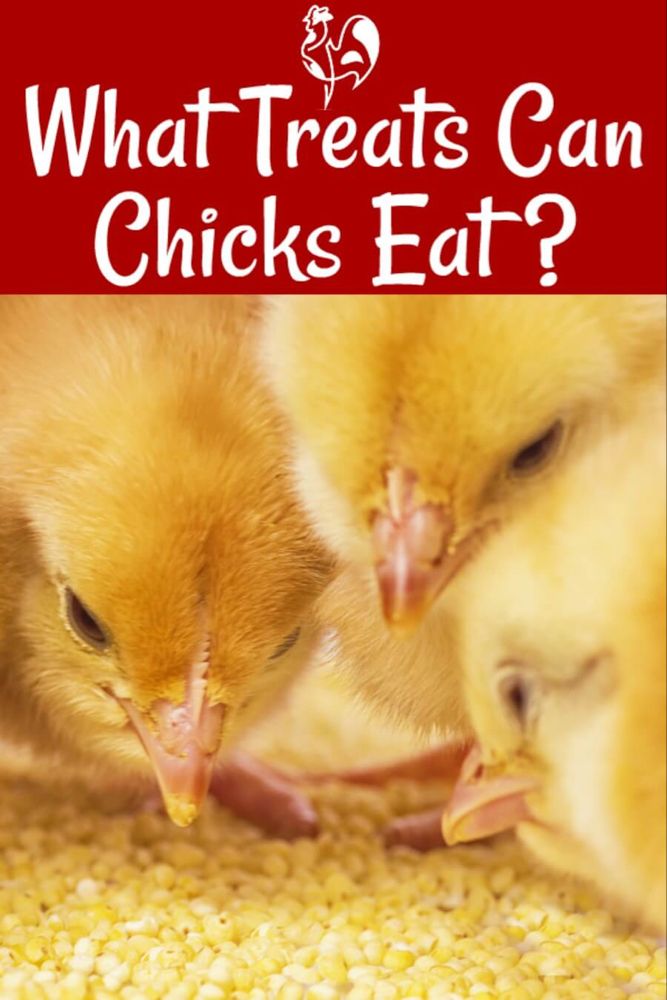 Let's add to the porridge a little cottage cheese or boiled fish chopped with bones, frog caviar or a favorite bird treat - earthworms. Separately, in the troughs, we will put mineral feed: coarse sand and crushed birch coal.
Let's add to the porridge a little cottage cheese or boiled fish chopped with bones, frog caviar or a favorite bird treat - earthworms. Separately, in the troughs, we will put mineral feed: coarse sand and crushed birch coal.
Both fish and worms and frog eggs belong to the animal world, which is why zootechnicians called these foods animal foods. And those that the earth produces and grows: grains, vegetables and herbs are called plant foods.
Vegetable foods are also divided into cereals, such as grains of various breads, flour, bran, and green foods, such as clover, various grasses, hay. Vegetables: potatoes and carrots are called root crops.
Green foods such as clover, alfalfa, green onions, carrots or young nettles are fed to chicks from the fourth or fifth day of life.
But how to prepare all these dishes?
Finding young nettles or green onions is not difficult. We grind them with a sharp knife and add two or three handfuls to a mash of millet porridge with bran or flour.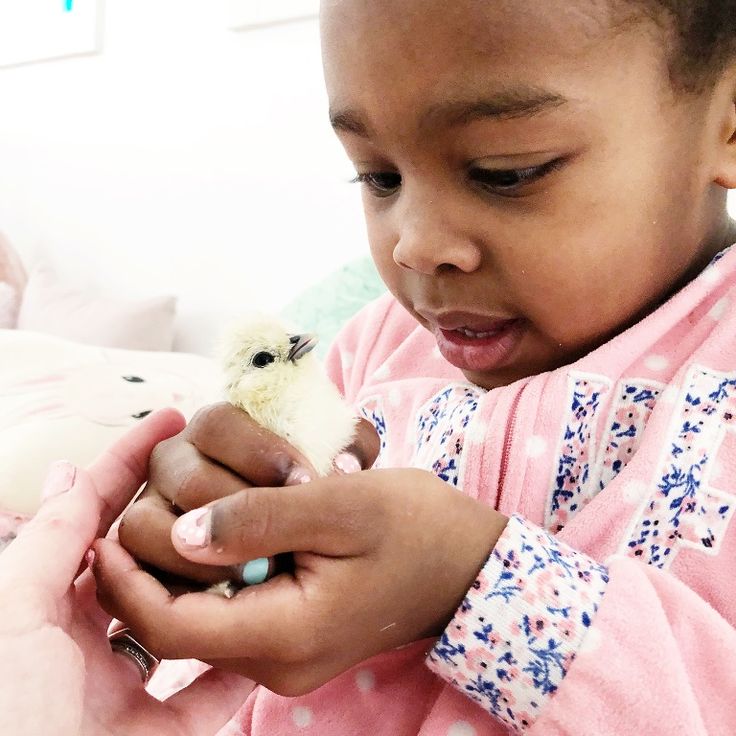 Greens in this case should be no more than a fifth of the crumbly mash.
Greens in this case should be no more than a fifth of the crumbly mash.
When fresh herbs are not available, dried clover, alfalfa or nettles can be used. They should be crushed in a bag, and the dust should be sifted through a sieve. Ready green "flour" is added to the feed at 3-4 grams per chicken.
It is even easier to tie bunches of clover or alfalfa stalks, sprinkle them with water in the evening, and tie them against the wall in the hen house in the morning. Pecking at the green stalks, the chickens jump high above the floor and quickly drag their prey away.
Carrots should not be hung up, chickens can't handle them anyway. It is rubbed through an iron grater and added to the feed at 5-10 grams for each chicken from ten to sixty days of age.
When feeding green fodder, it is sufficient to give the chicks one of the species, such as young nettles, carrots or dried clover.
“Is all this cooking necessary? the reader may ask. “Isn’t it easier to feed your chickens with one grain?”
Let's try to make such an experiment. Remove greens from your diet.
Remove greens from your diet.
Everything will go smoothly at first. But soon we will notice how the beaks and paws of our chicks will begin to turn pale and turn from yellow to white. Their growth will also stop.
Further things will get even worse: the eyes will begin to water, go out of their sockets, the feathers will ruffle; there will be such freaks that it will be scary to look at your pets.
The doctor will say without hesitation that our chickens have severe beriberi.
The word is not Russian. In Latin, vita means life, therefore, vitamins are called such substances, without which most animals cannot live and get sick.
These substances are found in some plant foods and not in others.
For example, growth vitamin A can be found in red carrots, yellow corn, clover, grasses, alfalfa, but not at all in white corn.
Vitamin D is essential for normal bone development in growing chickens. It is found, for example, in fish oil.
If chicks are exposed to direct sunlight, that is, rays not transmitted through window glass, such exposure is quite sufficient for the normal development of the skeleton.

 For broilers, loose compound feed can be introduced into the diet from the first days of life, and for laying hens - from the second week. When using dry mixes, it is important to provide the hens with sufficient drinking water.
For broilers, loose compound feed can be introduced into the diet from the first days of life, and for laying hens - from the second week. When using dry mixes, it is important to provide the hens with sufficient drinking water. 



